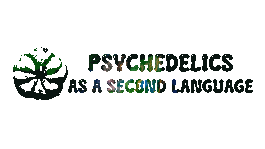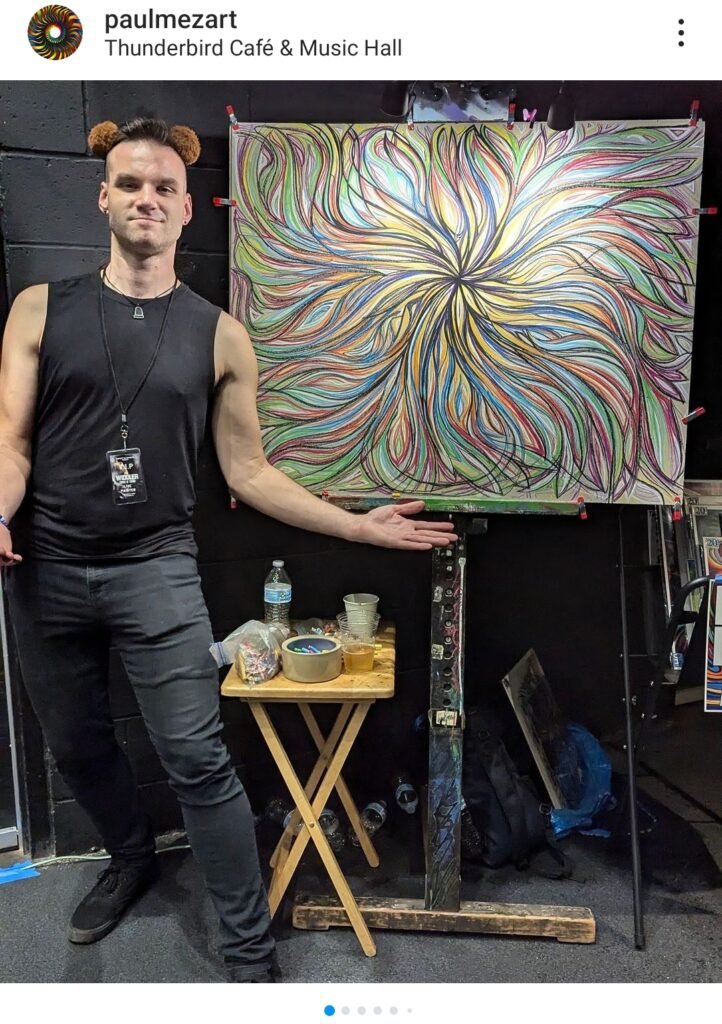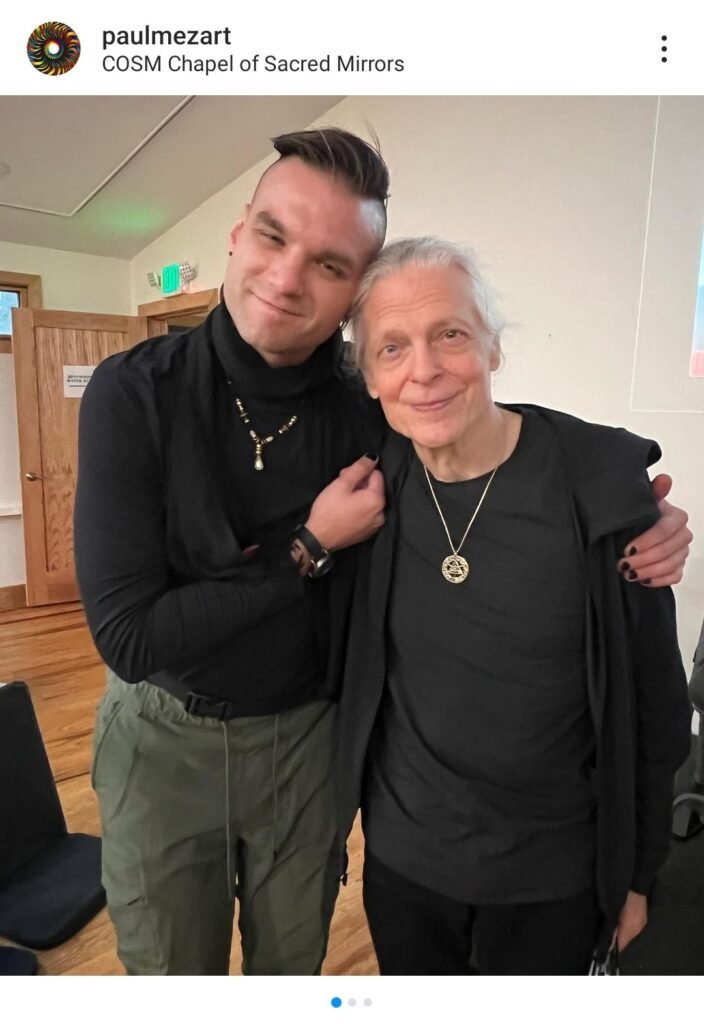Visionary Exploration and Inspirations with Paul Mez
Psychedelics have been tools to explore the human mind and being inspirations to many pieces of existing art, such as Julian Trevelyan’s artworks Elephants in Horse Boxes (Mescaline) and Horse with Bull (Mescaline) and the various paintings from Alex and Allyson Grey, making these compounds deeply tied with the imagination and a way to bring psychedelic experiences to the canvas and life.
Psychedelic experiences have since influenced a multitude of artists, including Paul Mez, who had a life-changing encounter at the age of 16. Following this experience, he found that he was able to start and complete a drawing in a single sitting as if a switch had been flipped in his brain.
We spoke to Paul to gain insights into how these compounds have influenced his life. We explored what inspires him to create his art, his experience meeting Alex Grey at the Chapel of Sacred Mirrors, and the advice he would offer to other artists seeking to connect with deeper realms of creativity or consciousness.
Read the full interview below!
How did your psychedelic journey begin? And what made you use psychedelics?
My first psychedelic experience was at the ripe age of 16, using psilocybin AKA Magic mushrooms. A childhood friend had secured the mushrooms, and without any preconceived notions of what may happen, we embarked on a magical journey of hilarity and self-exploration. The experience itself wasn’t particularly profound. But the afterglow that consumed me the next day altered my life trajectory forever. I sat in the living room of my childhood home on the south side of Chicago and completed a drawing from start to finish in a single sitting, something I had not previously accomplished. Although, technically, the piece of art left a lot to be desired, it symbolically represented a newfound lifelong dedication to refining my craft and spiritually inspired vision.
Which psychedelic experience has marked you the most, and how would you describe a psychedelic experience to someone who has never done psychedelics?
One of my most profound mystical experiences happened recently under the guiding hand of Ayahuasca. Although I have experienced a wide range of psychoactive substances and would even consider myself a veteran psychonaut, no other substance or sacred medicine has reached deeper into me and laid hands on what I could only describe as my Soul. Ayahuasca helped reconcile childhood trauma, relationships, and other life traumas through a series of fantastic visions and non-linear experiences that occurred over 14+ hours in a sacred and safe setting under the watchful guides of experienced shamans who had worked with the medicine for decades.
The simple act of dreaming during sleep may be the closest to describing the psychedelic experience to an uninitiated person. There are many artists working in a wide range of mediums who have attempted to transcribe their experiences using many different mediums.
How have psychedelics impacted the way you perceive and portray art?
Psychedelics have continually provided a level of inspiration that I could only describe as supercharged spiritual fuel. The creative insights, the explosive states of ecstasy and jubilee experienced during psychedelic-inspired flow states, the unending internal visions of infinite splendor, and experiences of oceanic consciousness dissolving into the cosmos have provided a constant fountain of inspiration to draw from. One of my most profound visions occurred under the influence of LSD during my teenage years. While simultaneously peaking and drawing, a group of heavenly cherubs revealed themselves to be gathered around my drawing hand. I could physically feel their push and pull as my pencil glided across the page. Since this experience, I’ve felt that my hands were cradled by angels, which led me to believe I had a divine mission in this world to make art.
What inspired you to start painting? And who do you look up to in the field of art?
My mother was easily my biggest inspiration and influence when it came to art. I grew up in a creative family, and to this day, each of us has continued to explore our respective creative fields. My mother is an artist and educator, which meant my home, as a child was filled with art supplies and art books about the old masters of art and provided a safe environment to explore many different art materials and to freely experiment.
Much like various art forms, the mind is abstract. Which of your paintings would you say best represents the mind?
Each of my works was born of an unfathomable and intangible quality of experience impossible to document or decode. The mind can be many things all at the same time. Using psychedelics to explore the deep recesses of human psychology has helped inform each of my artworks and continues to reveal greater depths of symbology. As research resumes regarding these fantastic materials of self-exploration, I hope that science will reveal to the Western mind the spiritual truths many Eastern mystics have professed for millennia.
Which psychedelic compound would you say best describes your art?
This is a hard one. Many different psychedelic materials have expressed different aspects of my art at oftentimes serendipitous moments. As a student of synchronicity, to claim any one entheogen accurately describes what it is I do with my artwork would be doing myself a disservice… But I would have to say Acid.
Do you believe there is a spiritual responsibility attached to being an artist? How do you approach that responsibility?
There is an enormous responsibility for the artist to disseminate the divine rays of spirituality among humanity as far and wide as possible for the greater good of common people all over Earth. I believe this to be especially true as our species considers interstellar travel.
Do you feel that your art is an extension of yourself, or does it take on a life of its own once it is out in the world?
Some artists get a divine flash of inspiration, but that is rarely the case when it comes to my work, even when utilizing what I call “envisionment.”
As vivid and perceptive as I may think some of my artworks are, I’ve been somewhat cursed with a rather dull minds eye or inner imagination.
Almost everything develops externally on the page or canvas. Using the outer environment to influence and shape my work is critical in capturing the rhythm, feeling, life, and meaning that make up any piece of my art.
My unconscious also has the uncanny ability to translate the mundane shapes I see in my everyday life into something fantastic and surreal on the drawing board. For example, the pattern in the kitchen sink drain or cracks in the ceiling has been known to resurface as shapes translated as exciting new artistic compositions.
What is your relationship with color and light in your work? Do they hold symbolic meanings for you?
As an artist, the contemplation of color and light has played a major role in the symbology and meaning I infuse my work with. Having studied color theory extensively and the color schemes of many great artists, I remain a humble student of this integral aspect of art. Studying the symbolism associated with color has led me to make choices about my own compositions that I may otherwise have not. My relationship with color has continued to develop and evolve during my 20 years of making trippy art.
Artists like Alex Grey and Alisson Grey sometimes take psychedelic compounds like LSD while painting their artworks. Have you done this as well? If so, would you say it impacts how you paint and how?
Yes, very much so. Utilizing a wide array of psychedelics during the art-making process has proved to be an indispensable aspect of my creative journey. Just as technique, meaning, and symbolism are critical to any artwork of import, psychedelics add a layer of often intangible spiritual influence and meaning. I completed my 10,000 hours of creating art back in my teenage years, and a large portion of those hours were spent under the influence of psychedelics and especially cannabis. Ensuring purity, dosage, and a safe set and setting are secured, I believe psychedelics can cause a mystical experience even in non-religious or previously non-spiritual persons, which may lend insight into their fundamental relationship with humans. I believe this to be especially true when we have a psychedelic experience with loved ones.
You met Alex Grey at the Chapel of Sacred Mirrors. How would you describe that experience, and what did it mean to you?
I first met Alex and Allyson Grey in 2011 at CoSM back in 2011. At the time, I had very few friends around me who had as deep of an admiration for psychedelics and visionary art as I did, so I sought the people and communities that did. I traveled alone to upstate New York on a train to volunteer during Earth Day that year. At the time, I also suffered from extreme social anxiety and even experienced panic attacks at the thought of meeting new people or talking about my art. There were many friendly people I met at CoSM as I worked through my social awkwardness. At one point, I believe Allyson Grey even picked up on my introverted nature and specifically went out of her way to zoom in on me to make me feel really seen and included in the community. Admittedly, there were also moments during this visit that left me feeling alienated and like an outsider, which were probably mostly due to my own insecure projections.
How would you describe Alex Grey, and what does he mean in your life?
In my humble opinion, Alex Grey is the greatest living artist on the Earth and has had a profound impact on my life after discovering his work associated with the mystical metal band known as TOOL. I own all of Alex Grey’s monographs, his book of poetry, and his seminal work on the role of visionary art titled The Mission of Art.
How would you describe the energy and beauty of the Chapel of Sacred Mirrors?
CoSM is a place of indescribable beauty, a convergence point for the most intrepid creatives, musicians, poets, philosophers, dancers, fire spinners, and more. In my opinion, CoSM is a sacred place to reflect on the deeper divine nature inside each of us. CoSM inspires me to make every life impression stronger and more loving in an attempt to honor the great beyond we each were born of and must return to.
Did you discuss any specific pieces of his artwork together? If so, which ones, and what did he share about their meaning?
Although I had the chance to visit CoSM a handful of times over the years, I have yet to interface with Alex in this way. It is one of my life’s great missions to share with Alex my work, which was largely inspired by his incredible visions. It’s important to understand my lineage, and it is one of my current life goals to share my work with Alex and Allyson, which will carry on the flame of visionary and spiritual artwork in the contemporary landscape.
How did meeting Alex Grey affect your goals or ambitions as an artist? Did you feel a shift in focus or purpose afterward?
Although meeting Alex Grey and becoming privy to his impressive body of work has given me much inspiration, I still remain steadfast in my original thoughts and vision. I am forever grateful for the worldwide movement known as visionary art that Alex and Allyson Grey have helped catalyze, but I also understand the importance of each of us who make up the glowing puzzle and tapestry of art and its prehistorical roots.
If you could ask Alex Grey one more question today, what would it be?
Honestly, I have such a deep respect and admiration for Alex Grey that when I am in his presence, I can enjoy his spirit without feeling the need to bombard him with questions and fanfare. But If I had to ask one question it might be, “What was it like to spend time with Terence McKenna?”
What advice would you give to other artists trying to connect with deeper realms of creativity or consciousness?
Be extremely careful. There is no casual experiment. Do your research. Look into your heart, mind, and spirit, and ask yourself exactly what you want from this experience.
Oftentimes consciousness exploration can be unexpectedly healing, but lurking traumas can also surface, resulting in what Stan Grof called a “spiritual emergency.” Lack of a safe environment and nurturing setting can result in potentially disastrous results, including what is colloquially known as a “bad trip.”
Having an intense psychedelic experience in the wrong context can leave you vulnerable in ways you may not have anticipated, and damage can and has been done to people in the past, including me, during careless brushes with these powerful tools. I would strongly advise anyone looking to embark on a consciousness journey to read the literature, watch the documentaries, find the communities, and submerge themselves in a positive and nurturing set and setting to help actualize the best possible outcome.
When I first experimented with psychedelics, I was too stupid to be scared, and possibly by chance, I began to have spiritual experiences in a non-spiritual or religious context. Set your intention and let go of what you think you know is key advice.
What is your current position about how psychedelics are taught and the state of psychedelics? In your opinion, what is missing, and what could change for the better?
I am a naturally optimistic person, and the field of psychedelics is no exception. We live in a time where there have never been more tools available to help achieve a positive psychedelic experience. From resources like Erowid.org, which provides dosing guides, substance legality, chemistry, and anecdotal resources, to non-profits like MAPS, which are leading the charge for bringing psychedelics to individuals with PTSD for healing, the future is bright. There will always be perfidious corporations looking to exploit healing and pain for profit, and psychedelics are no exception. Read the literature. Realize that you are part of a vast lineage of medicine workers spanning millennia, and it is each of our responsibility to honor those who helped bring healing and the visionary experience.
Do you think art may be used as a vial to educate others about these compounds and their effects?
The whole genre of visionary art is loosely based on the delicate transcription of individual non-ordinary experiences to the world at large. Art is a crucial vehicle for bringing back evidence of a beatific experience, especially for the uninitiated to contemplate and hopefully be inspired by. Psychedelics are by no means for everyone, and to be completely honest, I believe many people should never use psychedelics for a myriad of reasons I won’t go into here. Art is one of the prime components for sharing the inner visions that can occur during a non-ordinary experience with psychedelics.
What do you hope to see in the future for your art and psychedelics?
I continue to strive for excellence, and I have a long, long way to go. I am humbled daily by creators from around the globe that social media brings to my attention. I have a lot to learn, and remaining humble has been key to my own development and evolution. Also, DMT can be rather humbling. Having experimented with dozens of different psychoactive and psychedelics, I can only imagine what fantastic tools for understanding psychology, a deeper appreciation of sexuality, and the cultural richness the future holds. The power of psychedelics to unify is one of their most cherished characteristics that I believe may play a major role in healing our world.
Lastly, where can people find your work?
I am currently based in Pittsburgh, PA., and have displayed my work in several galleries in and around the city. More recently, over the past 2 years, I have taken to the Midwest and East Coast festival circuit as a live painter, feeding off the electric emotions of the crowd and channeling that energy back into my artwork as a toroidal energetic loop.
Looking to connect? Follow me on Instagram at @paulmezart or visit my website at PaulMez.com
My online art shop can be found at Etsy.com/shop/PaulMez, or if you are interested in a commission or private viewing of my work in person, you can e-mail me at: Pa***********@***il.com
Happy Trails!





